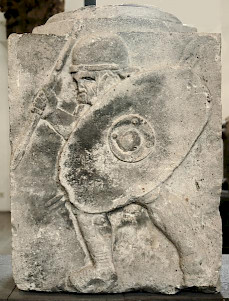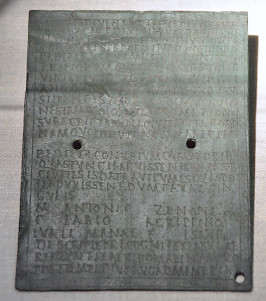Auxiliaries
Auxiliaries: non-citizen soldiers serving in the Roman army.

The Roman army consisted of the famous legions: large units of heavy infantry, recruited among Roman citizens. Next to it were the troops of the allies: the Latins at first, but later also other troops.
For centuries, the allied units were a motley collection of all kinds of soldiers, infantry and cavalry, but during the reign of the emperor Claudius (r.41-54), they were reorganized, or rather: standardized. Every free man of the empire could enlist in the cohorts of the auxiliary troops, which were commanded by a Roman prefect. After twenty-five years of service, the auxiliary soldier would receive Roman citizenship. (The act of naturalization was written on a diploma.)
Auxiliary soldiers were paid 5/6th of a legionary's salary. Their units were placed in the castella along the limes, where they would be the first defenders of the Roman Empire. The legionaries, stationed in large legionary bases (castra), were usually employed for siege warfare.

The distinction between Roman citizens serving as legionaries and non-citizens serving as auxiliaries was not clear-cut. There were several auxiliary cohorts of Roman citizens, created during the first years of the first century CE. It is possible that these soldiers were former legionaries who had disgraced themselves during the Illyrian Revolt (6-9 CE) and were demoted to the auxiliary troops. The distinction between auxiliary and legionary soldiers became obsolete after the emperor Caracalla (r.211-217) had declared that all free inhabitants in the empire would receive full Roman citizenship (the Constitutio Antoniniana).
Beside the citizen and non-citizen soldiers of the Roman Empire, there were soldiers from outside the empire, serving under their own leaders.